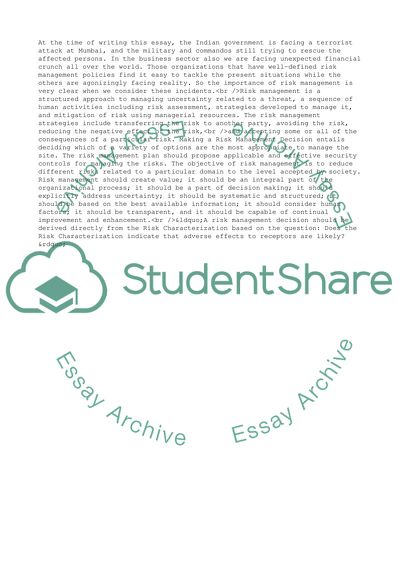Cite this document
(Risk Management Decisions Essay Example | Topics and Well Written Essays - 3250 words, n.d.)
Risk Management Decisions Essay Example | Topics and Well Written Essays - 3250 words. https://studentshare.org/management/1718567-a-what-are-the-key-risk-management-decisions-the-rest-in-order-instruction
Risk Management Decisions Essay Example | Topics and Well Written Essays - 3250 words. https://studentshare.org/management/1718567-a-what-are-the-key-risk-management-decisions-the-rest-in-order-instruction
(Risk Management Decisions Essay Example | Topics and Well Written Essays - 3250 Words)
Risk Management Decisions Essay Example | Topics and Well Written Essays - 3250 Words. https://studentshare.org/management/1718567-a-what-are-the-key-risk-management-decisions-the-rest-in-order-instruction.
Risk Management Decisions Essay Example | Topics and Well Written Essays - 3250 Words. https://studentshare.org/management/1718567-a-what-are-the-key-risk-management-decisions-the-rest-in-order-instruction.
“Risk Management Decisions Essay Example | Topics and Well Written Essays - 3250 Words”. https://studentshare.org/management/1718567-a-what-are-the-key-risk-management-decisions-the-rest-in-order-instruction.


